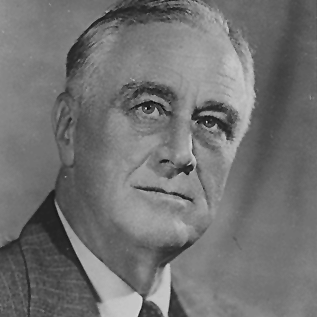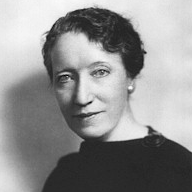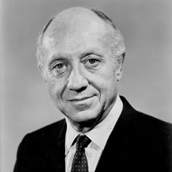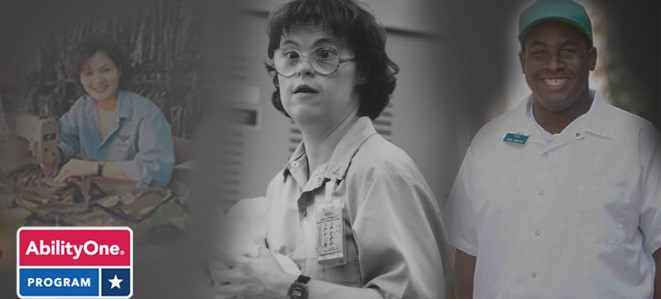History
The AbilityOne Program is one of the largest sources of employment in the United States for people
who are blind or have significant disabilities. More than 400 nonprofit organizations employ
these individuals and provide quality products and services to the Federal Government at a fair
market price.
The Program is administered by the U.S. AbilityOne Commission, an independent Federal agency, with
assistance from National Industries for the
Blind (NIB) and SourceAmerica®.
The U.S. AbilityOne Commission is the operating name for the Committee for Purchase From People Who Are Blind or Severely Disabled.
AbilityOne Milestones
1938
President Franklin D. Roosevelt signs the Wagner-O’Day Act on June 25, 1938. Congress establishes
the Committee on Purchases of Blind-Made Products (Committee), and President Roosevelt appoints the
Committee’s first members. The Committee will later become known as the U.S. AbilityOne Commission
(Commission).



(l to r) President Franklin D. Roosevelt, Senator Robert Wagner-NY, and Rep. Caroline
O'Day-NY
1938

NIB was incorporated as a 501(c)(3), private, nonprofit corporation on August 10, 1938.
1940s
As American forces take up arms to defend democracy in WWII, workers who are blind help meet the
growing demand for various products needed by the military.
1952

NIB launches SKILCRAFT® - the brand name for quality products made by people who are blind.
1955
The first military resale products reach the shelves in commissary stores.
1969
NIB establishes a rehabilitation-services division to nurture the skills of people who are blind.
1971
Legislation sponsored by Senator Jacob K. Javits amends the original Wagner-O’Day Act to include
people with significant disabilities and allow for the provision of services, as well as products.
The legislation becomes known as the Javits-Wagner-O’Day (JWOD) Act.
The Act provides for a full-time civil-servant staff to support the Committee members.
.
Senator Jacob K. Javits - NY
1974
National Industries for the Severely Handicapped (later to become NISH, and then SourceAmerica®)
begins operations. It joins NIB as a Central Nonprofit Agency (CNA) in the JWOD Program.
1980
The JWOD Program provides jobs to 7,500 people, provides 3.8 million direct labor hours, pays an
average hourly wage of nearly $3.00, and pays $11.6 million in direct labor wages.
1988
GSA implements changes in procurement practices in the government marketplace relating to the
Federal supply system and government purchase cards. The JWOD Program responds by collaborating with
its Federal customers to meet their needs while providing best-value products and services.
1991
Operations Desert Shield and Desert Storm create a massive production surge in JWOD-participating
nonprofit agencies, which meet the challenge of supplying American troops with millions of dollars’
worth of critically-needed products. Never before have JWOD-participating nonprofit agencies been
called upon to deliver so many products and services in so short a period of time.
1996
The Committee authorizes the first commercial distributors for JWOD products.
2001
The JWOD Program provides surge support during Operation Enduring Freedom and Operation Iraqi
Freedom. There is a significant growth in employment opportunities, and the program expands product
and service lines to provide military-unique requirements including chemical protective garments,
uniforms, fleet-vehicle maintenance, and document destruction.
2005
In response to Hurricanes Katrina, Rita and Wilma, NIB and SourceAmerica come to the aid of their
impacted affiliated nonprofit agencies and employees with various forms of financial, technical and
logistical assistance. NIB and its affiliated nonprofit agencies donate more than $250,000 to assist
affected employees who are blind. SourceAmerica authorizes $5 million and creates a Disaster Relief
bulletin board on its website to pair affected nonprofit agencies with those providing assistance.
2006
For the first time, the Committee elects a Chairperson who is a private citizen and a person with a
disability. The Committee also, for the first time, elects a Vice Chair who is a private citizen and
who is blind. The Committee changes the name of the Javits-Wagner-O’Day Program to the AbilityOne
Program, so as to increase brand recognition; the Committee subsequently approves a corresponding
logo.The Committee publishes an explanation of the name change in the Federal
Register.
2008
President George W. Bush signs a memo of support for the AbilityOne Program, and First Lady Laura
Bush holds a recognition event at the White House with employees of the year.
2011
The Committee begins operating as the U.S. AbilityOne Commission.
2012
AbilityOne sales and services to the Federal Government are valued at more than $2 billion. While
AbilityOne continues to experience growth in wages paid to its more than 50,000 employees,
AbilityOne sales to the Federal Government account for less than one percent of all Federal
procurement dollars spent.
2013

NISH begins operating as SourceAmerica® to better represent the exceptional
workforce that inspires its vision: employment for every person with a significant disability.
2014/2015
AbilityOne nonprofit agencies manufacture impermeable utility aprons and biohazard bags to help
contain the Ebola virus. Both items are used to support Operation United Assistance, the Defense
Department mission supporting the U.S. Agency for International Development–led effort to contain
Ebola in Western Africa.
2016
The Commission issues its “Declaration in Support of Minimum Wage for All People Who Are Blind or
Have Significant Disabilities.”
The Commission signs Cooperative Agreements with NIB and SourceAmerica. These first-ever written
agreements between the Commission and the CNAs define the governing relationship between the parties
and spell out the roles and responsibilities of each.
The Commission’s Office of Inspector General (OIG) is established. Its mission is to promote the
economy, efficiency and effectiveness of AbilityOne programs and operations, and protect these
programs and operations against fraud, waste, abuse and mismanagement.
2017
The Commission establishes a Western U.S. Field Office to strengthen oversight of the AbilityOne
Program and provide support to Federal customers.
The Commission establishes a Directorate of Veterans Employment and Initiatives to focus on
providing employment opportunities to veterans who are blind or have significant disabilities.
2018

The Commission designates the American Foundation for the Blind (AFB) to join NIB and SourceAmerica
as an AbilityOne CNA. The Commission and AFB sign a Cooperative Agreement. AFB subsequently
successfully completed the first phase of its Cooperative Agreement with the Commission and decided
not to pursue additional phases. AFB’s status as an AbilityOne CNA ended on Dec. 31, 2020.
2022
The Commission issues a rule that prohibits payment of subminimum wages on contracts within the
AbilityOne Program, effective October 19, 2022.






